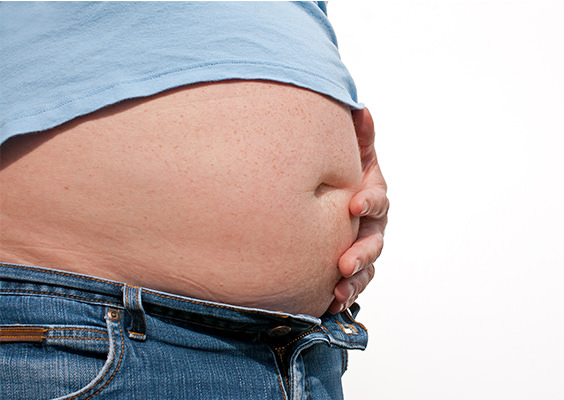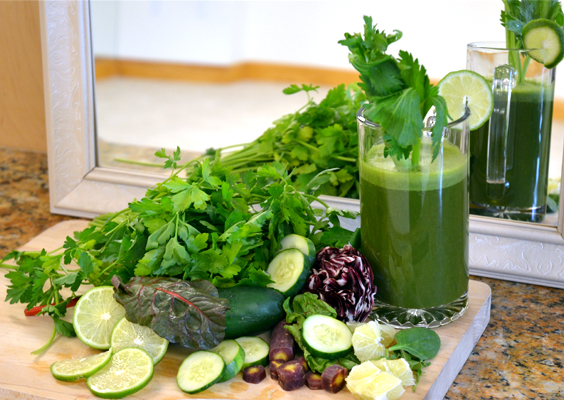I tell my patients to avoid drinking soda not just because they make you fat.
Each sip of soda affects your health.
Soda puts you at risk for health problems like metabolic syndrome. This is a collection of symptoms that can lead to diabetes, heart disease and other chronic diseases, like cancer.
Soft drinks are the beverage of choice for millions of Americans.

The latest research now reveals that sodas are a major cause of visceral fat — the deadliest kind of fat you can have, inflaming your tissues, rotting your blood vessels and upsetting your body chemistry.
In a minute I’m going to tell you about a great healthy alternative to soda — and also the best way I know to help you shed visceral fat.
But first, let’s take a deeper look at the problem…
Visceral fat is stored around your abdominal cavity. And it doesn’t just give you an apple-shaped figure or a swelling beer belly. It wraps itself around your vital internal organs, like your liver and pancreas.
So when you go for your next appointment, your doctor should measure more than your weight. They should also measure your waist. This is not just an indicator of visceral fat levels and potential health problems that may be around the corner, but a sign that you may need to take corrective action before it’s too late.
Visceral fat also tends to make your belly feel firm, rather than flabby.

Let me explain…
Although people who are overweight or obese are more likely to have large amounts of visceral fat, normal-weight people also can have too much, too.
You see, this type of dangerous fat is not a passive repository of energy. It functions like an active organ that emits hormones and other chemicals, some of them extremely
harmful.Visceral fat also appears to be more metabolically active than surface fat and can result in increased secretion of cortisol, the stress hormone, which when left unchecked wreaks havoc on your immune system and causes the inflammation at the root of many chronic diseases.i
That’s one reason why visceral fat significantly raises your risk of diabetes and heart disease — far beyond what was previously thought.
It has been shown to cause:
- Excessively high insulin levels;
- High triglycerides, which leaves dangerous deposits of plaque inside blood vessels;
- High blood pressure;
- Disruption of hormonal communication between organs.
And these can also lead to breast and colorectal cancer, stroke, Alzheimer’s disease and other forms of dementia, depression, arthritis, obesity, sexual dysfunction and sleeping disorders.ii
High levels of visceral fat also raise your risk of non-alcoholic fatty liver disease (NAFLD) — one of the fastest-growing health epidemics in the world.
NAFLD is closely linked to the skyrocketing rates of type 2 diabetes and obesity over the past couple of decades. But its roots lie in insulin resistance and the explosive rise in sugar consumption — particularly Big Agra’s high-fructose corn syrup, the cheap sweetener in sugary sodas.
Normally, when sugar is consumed, glucose is absorbed into the bloodstream for energy and driven into your body’s tissues with the help of insulin.
But fructose takes a different path — most of it goes straight to your liver, where it stimulates the production of triglycerides. It is the buildup of excess triglycerides in the liver that leads to NAFLD as well as the visceral fat around the organ.
The condition causes serious liver problems, including painful swelling and scarring that can lead to cirrhosis, liver failure and even death.
All that excess sugar also overwhelms your body’s ability to process it. Your insulin levels spike but your cells refuse to accept the glucose as a source of energy. So instead it’s stored as fat.
According to Johns Hopkins Medicine, men with a waist measure of 40 inches or more and women with a waist measure of 35 inches or more are at greater risk of having health problems as a result of too much visceral fat.iii
In a recent study, researchers working with the National Institutes of Health (NIH) analyzed the data of 1,003 sugary-beverage drinkers aged around 45 over a six-year period to measure changes in their visceral fat.
The subjects underwent computed tomography (CT) scans at the beginning and end of the study period. And the results proved that participants who consumed sugary drinks on a daily basis had vastly higher increases in visceral fat — at an average 852 cubic centimeters.iv
Sodas, of course, are just one part of the problem — albeit a pretty big part. I recommend my patients cut all processed foods and refined sugars from their diet, and dramatically reduce their carbohydrate intake.
Ideally, the bulk of your daily diet should be grass-fed or free-range meat and proteins as well as organic vegetables and fruits to ensure you’re getting the right balance of nutrients, fatty acids and antioxidants.
And as a healthy alternative to soda, I recommend my patients try what I call my “Green Drink.” It’s full of the vitamins and minerals your body needs and will help you keep visceral fat to a minimum.

Here are the ingredients:
- ¼ cup radicchio
- 1 purple carrot
- 1 cucumber
- 1 lime
- ¼ cup parsley
- ½ cup Swiss chard
- ½ cup filtered water
After you gather these raw vegetables, simply blend with ice into a large smoothie, which still contains all the vital cellulose.
You don’t have to follow this recipe to the letter. You can make it to your taste. You can replace the spinach with mixed greens or kale. You can trade out a lemon for the lime.
But remember, you don’t want to spike your blood-sugar, which will end up stored as fat.
Several studies show that exercise is also a high effective way to reduce visceral fat. Studies have even revealed that exercise prevents you regaining visceral fat long after you lose the weight.v,vi
I recommend my popular PACE exercise program, which will help you shed visceral fat and build your lung power in just 12 minutes a day.
To learn more about PACE, click here .
To Your Good Health,

Al Sears, MD, CNS
Reference:
iBjörntorp P. “Metabolic difference between visceral fat and subcutaneous abdominal fat.” Diabetes Metab. 2000 Jun;26
iiWhiteman H. “Sugary drinks may increase harmful body fat.” Medical News Today. January, 2016.
iiiJohns Hopkins Medicine, The skinny on visceral fat, accessed 8 January 2016.
ivFox CS, Ma J, McKeown NM, Hwang SJ, Hoffmann U, and Jacques PF. Sugar-sweetened beverage consumption is associated with change of visceral adipose tissue over 6 years of follow-up. Circulation. 2016.
vHunter GR , Brock DW, et al Training Prevents Regain of Visceral Fat for 1 Year Following Weight Loss Gary R. Integrative Physiology 18, 690–695. doi:10.1038/oby.2009.316
viTakeshita, H, et al. “Long-term voluntary exercise, representing habitual exercise, lowers visceral fat and alters plasma amino acid levels in mice.” Environmental Health and Preventive Medicine Jul 2012
